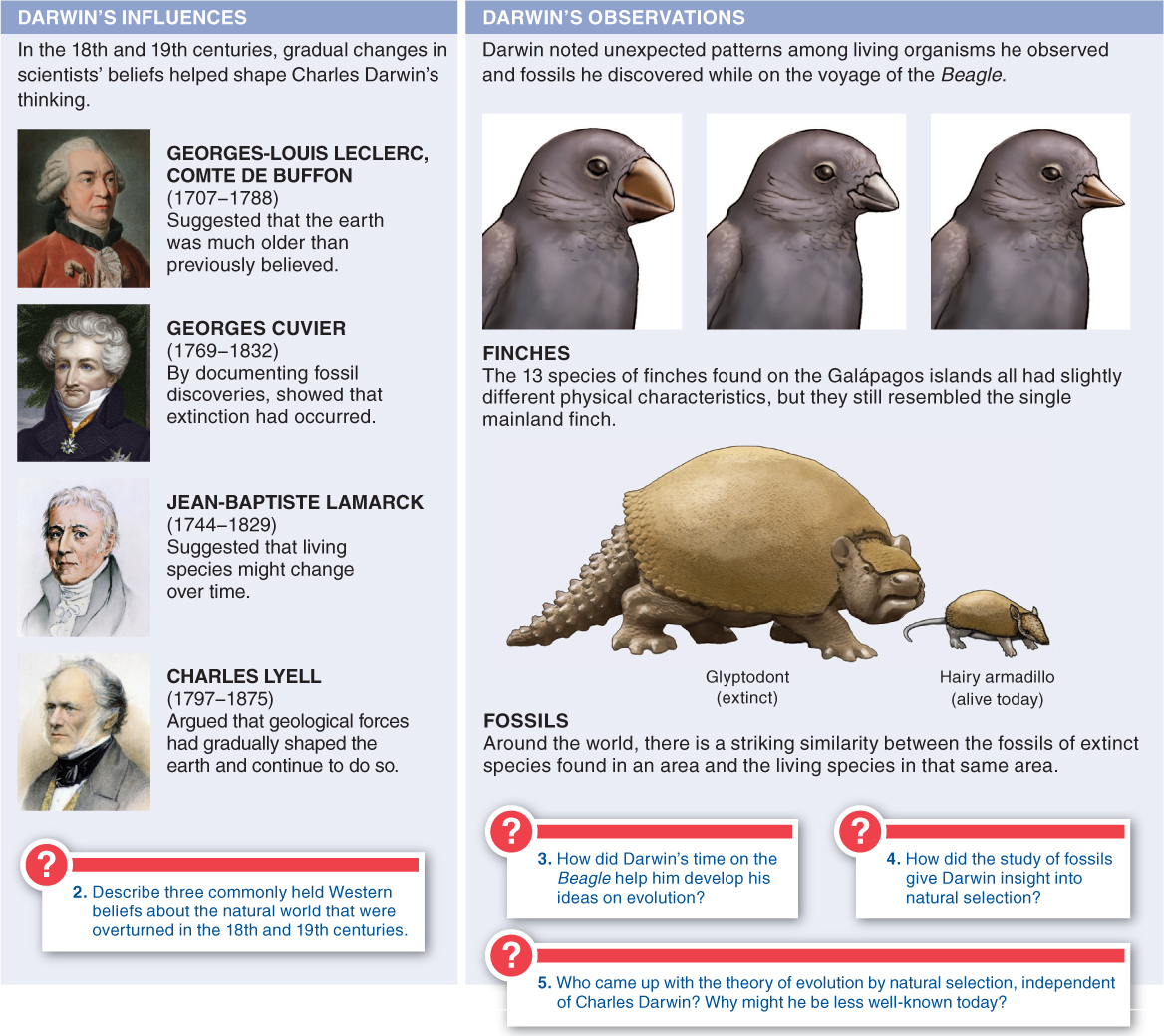8.2–8.4: Darwin journeyed to a new idea.
Charles Darwin developed a theory of evolution by natural selection that explained how populations of species can change over time.

361
Question 8.11
Evolution occurs:
- a) only when the environment is changing.
- b) only through natural selection.
- c) almost entirely because of directional selection.
- d) only through natural selection, genetic drift, migration, or mutation.
- e) by altering physical traits but not behavioral traits.

Question 8.12
Which of the following statements about mutations is incorrect?
- a) Mutations are almost always random with respect to the needs of the organism.
- b) A mutation is any change in an organism’s DNA.
- c) Most mutations are harmful or neutral for the organism in which they occur.
- d) The origin of genetic variation is mutation.
- e) All of these statements are correct.

Question 8.13
In a fish population in a shallow stream, the genotypic frequencies of yellowish-
- a) gene flow.
- b) disruptive selection.
- c) directional selection.
- d) stabilizing selection.
- e) genetic drift.

Question 8.14
When a group of individuals colonizes a new habitat, the event is likely to be an evolutionary event, because:
- a) members of a small population have reduced rates of mating.
- b) gene flow increases.
- c) mutations are more common in novel environments.
- d) new environments tend to be inhospitable, reducing survival there.
- e) small founding populations are rarely genetically representative of the initial population.
